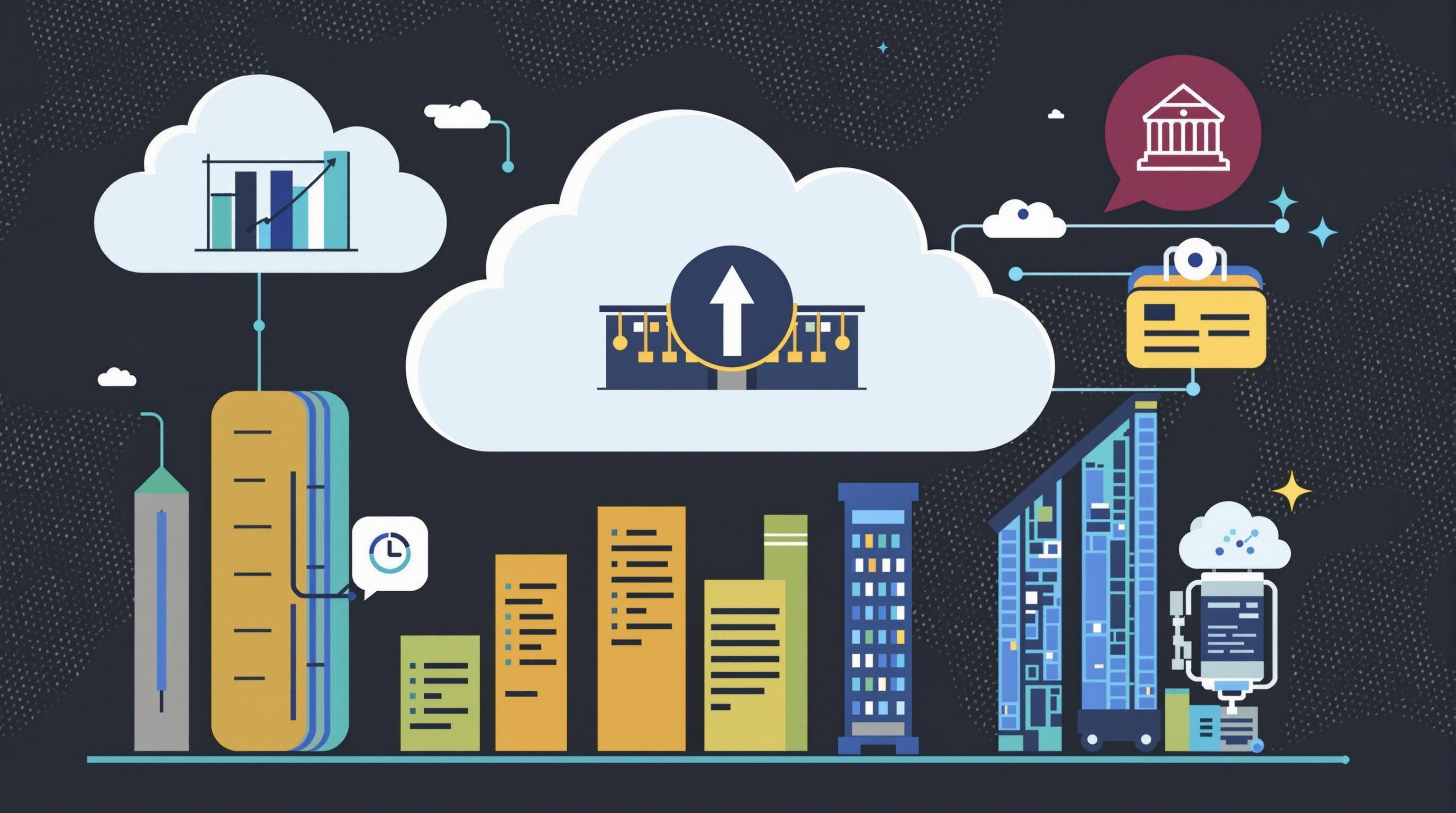Related Articles
- How Emotional Spending Biases in Leadership Can Influence Company Financial Transparency and Accountability
- Unveiling the Role of Employee Psychology in Shaping Unexpected Business Budget Outcomes
- Top 6 Disruptive Invoice Platforms Launched Since 2019 Tackling Automation Bottlenecks in Unconventional Ways
- Top 6 Smart Accounting Softwares Since 2019 That Revolutionize Tracking Business Tax Write-Offs
- The Rise of Biometric Authentication in Digital Finance: A New Frontier for Secure Business Transactions
- How Small Nonprofits Leverage Alternative Finance Tools to Navigate Accounting Challenges Off the Radar
Top 8 Innovative Financial Management Tools Released Since 2019: In-Depth Reviews & ROI Rankings for Executives
Top 8 Innovative Financial Management Tools Released Since 2019: In-Depth Reviews & ROI Rankings for Executives
Top 8 Innovative Financial Management Tools Released Since 2019: In-Depth Reviews & ROI Rankings for Executives
1. Oracle NetSuite ERP (2020 Edition)
Overview: Oracle NetSuite’s 2020 ERP edition revolutionized financial management by integrating AI-driven analytics and real-time data processing. It offers cloud-native scalability tailored for midsize to large enterprises seeking comprehensive financial oversight.
Key Features: The platform excels with automated billing workflows, multi-currency management, and enhanced compliance tools. The intuitive dashboard uses AI to forecast cash flow and detect anomalies, helping executives make informed decisions swiftly.
ROI Insights: Companies implementing NetSuite reported up to a 30% reduction in financial closing times and a 20% increase in forecasting accuracy, leading to improved budget allocations and cost savings on audit processes (Oracle Annual Report, 2021).
2. QuickBooks Online Advanced (2019 Update)
Overview: QuickBooks Online Advanced updated in 2019 targeted growing small businesses and mid-market firms by bolstering its automation and reporting capabilities. Its integration with third-party apps expanded financial control and customization.
Key Features: Notable improvements include batch transaction processing, enhanced custom user permissions, and advanced analytics via a connected Power BI tool. These features reduce administrative overhead while enhancing data visibility for executives.
ROI Insights: Users have documented up to 40% faster invoice processing and a 25% reduction in manual accounting errors, translating into better cash flow management and time saved on bookkeeping (Intuit Customer Analytics, 2020).
3. Xero HQ (Launched 2019)
Overview: Designed specifically for accountants and financial advisors managing multiple clients, Xero HQ offers a centralized dashboard with multi-business performance tracking and workflow optimization.
Key Features: The tool integrates seamlessly with Xero’s core accounting platform and incorporates real-time KPI tracking, client collaboration tools, and automated task reminders to streamline financial advisory services.
ROI Insights: Firms report a 35% improvement in client servicing speed and a 50% reduction in missed deadlines or overlooked financial milestones, improving client satisfaction and retention (Xero Limited Case Study, 2021).
4. Sage Intacct (Enhanced 2020 Version)
Overview: The 2020 enhancement of Sage Intacct introduced advanced cloud financial management capabilities with embedded AI for predictive insights. This tool serves mid to large enterprises focusing on complex revenue recognition and compliance.
Key Features: Its strengths lie in robust financial consolidation, dimensional reporting, and audit trail transparency. The AI module forecasts revenue trends and highlights risk areas before they impact business outcomes.
ROI Insights: Organizations leveraging Sage Intacct documented a 25% faster financial close process and a 15% improvement in compliance audit readiness, significantly reducing operational risk (Sage Intacct Whitepaper, 2022).
5. Zoho Books Plus (2021 Release)
Overview: Zoho Books Plus rolled out in 2021 aimed at SMEs seeking affordable yet scalable cloud accounting solutions with integrated automation and AI assistance.
Key Features: Among its offerings are automated bank feeds, intelligent invoice reminders, tax compliance management, and AI-powered expense categorization. The modular approach allows businesses to tailor functionalities as they grow.
ROI Insights: Customers report a 30% reduction in administrative workload and a 22% increase in on-time payments due to improved invoice management strategies (Zoho User Reports, 2022).
6. BlackLine Finance Controls and Automation (2019 Expansion)
Overview: BlackLine expanded in 2019 to include more sophisticated controls and automation features aimed at mid to large enterprises requiring stringent financial close management and regulatory compliance.
Key Features: The platform automates account reconciliations, task management, and journal entry approvals while providing visibility through real-time dashboards. Its compliance tracking improves internal controls and audit preparedness.
ROI Insights: Deployment led to a 40% reduction in close cycle times and a 30% decrease in compliance incidents among financial reporting teams (BlackLine Case Studies, 2020).
7. Fathom Financial Intelligence (Upgraded 2020)
Overview: Fathom upgraded its analytics and reporting suite in 2020 to provide executives with deep financial intelligence through detailed visualizations and KPI metrics tailored for performance management.
Key Features: Features include custom KPI dashboards, scenario modeling, and comprehensive cash flow forecasting. It integrates with multiple accounting systems to pull consolidated financial data instantly.
ROI Insights: Executives have cited a 35% boost in strategic financial planning efficiency and a significant improvement in identifying growth opportunities and risks earlier (Fathom Analytics Report, 2021).
8. Adaptive Insights by Workday (2019 Major Update)
Overview: The 2019 major update to Adaptive Insights enhanced its cloud-based corporate performance management platform with stronger planning, budgeting, and forecasting modules, catering to enterprises across industries.
Key Features: Enhanced collaboration tools, driver-based planning, and AI-augmented scenario analysis enable executives to forecast with granular precision and adjust quickly to market conditions.
ROI Insights: Businesses using Adaptive Insights observed up to a 50% acceleration in budgeting cycles and improved forecast accuracy by 30%, significantly aiding in resource optimization (Workday Financial Report, 2020).
9. Expensify (2021 Automation Enhancement)
Overview: Expensify’s 2021 automation upgrades elevated its role from expense tracking to a comprehensive spend management system with AI-powered fraud detection and policy enforcement.
Key Features: The tool now supports automatic receipt scanning, instant expense approvals, and integration with corporate credit cards as well as ERP platforms, simplifying travel and expense workflows.
ROI Insights: Organizations reported a 60% reduction in expense processing time and a 25% decrease in policy violations, improving corporate spend visibility and control (Expensify User Survey, 2022).
10. Tipalti AP & Finance Automation (2020 Product Launch)
Overview: Tipalti’s 2020 launch targeted accounts payable automation by offering an end-to-end supplier payments platform that reduces risks while optimizing cash management for global businesses.
Key Features: Key capabilities include automated supplier onboarding, multi-currency payment management, tax compliance, and real-time payment tracking, which improve global operational efficiency.
ROI Insights: Companies saw a 70% reduction in manual AP tasks and a 35% improvement in supplier payment accuracy, accelerating vendor relationships and reducing payment risks (Tipalti Customer Results, 2021).
Conclusion
The financial management landscape since 2019 has witnessed remarkable innovation, with tools incorporating AI, cloud scalability, and automation to improve accuracy, efficiency, and strategic insights for executives. Selecting the right tool depends on enterprise size, sector needs, and specific financial challenges. Investing in these technologies not only streamlines operations but consistently delivers measurable ROI, making them essential in today's competitive business environment.




